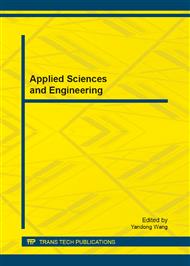p.628
p.633
p.638
p.643
p.649
p.656
p.661
p.669
p.677
Rechargeable Sensor Energy Maintenance Scheme in the Internet of Things
Abstract:
Internet of things applications using RFID sensors are a challenging task due to the limited capacity of batteries. Thus, energy efficient updating and maintenance have become more critical design with RFID sensor network. This paper is dedicated to combine energy harvesting and maintenance, sensor network, and resource discovery to develop a rechargeable sensor energy maintenance scheme. To deal with key sensor nodes and low energy path maintenance, the proposed approach consists of the following:(1)key point energy maintenance for RFID sensor through multi-path similarity analysis;(2)path energy maintenance for RFID sink through energy resource discovery. Use case application and simulation results show that the proposed methods reduce key sensor nodes energy maintenance time and energy maintenance path length for sensor nodes energy updating and maintenance.
Info:
Periodical:
Pages:
649-655
Citation:
Online since:
September 2012
Authors:
Price:
Сopyright:
© 2012 Trans Tech Publications Ltd. All Rights Reserved
Share:
Citation:


